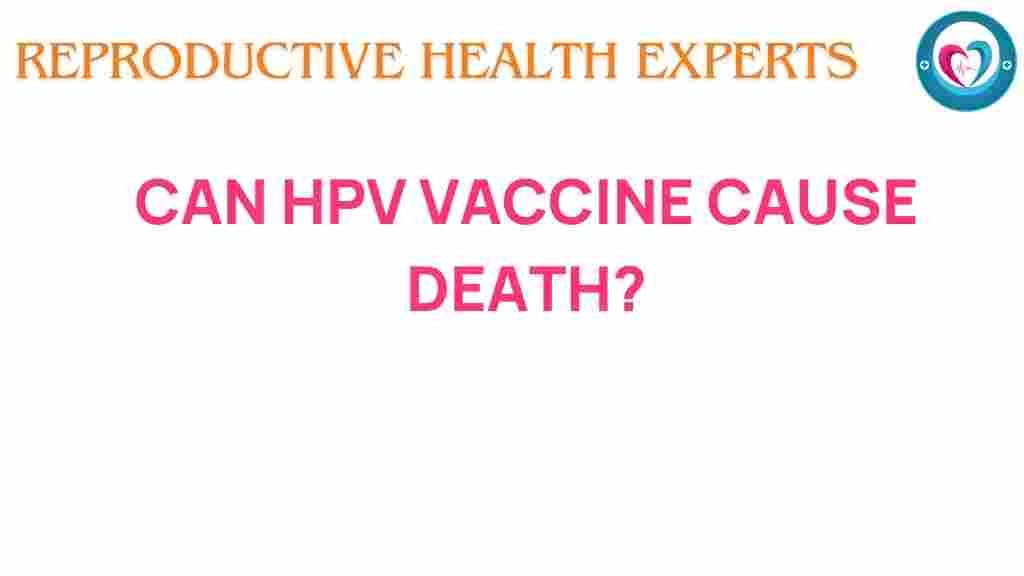The HPV Vaccine: Is There a Hidden Risk of Fatality?
The Human Papillomavirus (HPV) vaccine has been a significant advancement in public health, aimed at reducing the incidence of HPV-related cancers. However, despite its benefits, there are ongoing discussions surrounding the safety concerns and potential health risks associated with the HPV vaccine. In this article, we will explore these concerns, examine the medical research surrounding the vaccine, and assess whether there is any hidden risk of mortality associated with vaccination.
Understanding the HPV Vaccine
The HPV vaccine is designed to protect against the strains of HPV that are most commonly linked to cervical cancer, as well as other types of cancer such as anal, throat, and penile cancers. This vaccine is typically recommended for preteens but can be administered to individuals up to the age of 45.
- Types of HPV vaccines: Gardasil, Gardasil 9, and Cervarix.
- Administration: Given in a series of 2 or 3 doses, depending on age.
- Target population: Primarily preteens, but extended to older individuals.
Public Health Impact
The introduction of the HPV vaccine has led to a significant reduction in HPV infections and related cancers. According to various health organizations, the vaccine has the potential to prevent thousands of cancer cases each year. This vaccination campaign is crucial in the fight against cervical cancer and other HPV-related diseases.
Safety Concerns Surrounding the HPV Vaccine
Despite its benefits, some parents and individuals express concerns about the safety of the HPV vaccine. Common concerns include:
- Reports of side effects after vaccination.
- Questions about long-term effects.
- Allegations of severe adverse events leading to mortality.
These concerns have led to a need for thorough medical research to evaluate the risks associated with the vaccine.
Examining Side Effects
Like any medical intervention, the HPV vaccine can cause side effects. Most side effects are mild and temporary, including:
- Pain at the injection site.
- Fever.
- Nausea.
- Fatigue.
Serious side effects are very rare. Health authorities continue to monitor the safety of the vaccine through extensive research and reporting systems. The Centers for Disease Control and Prevention (CDC) provides detailed information regarding the safety and efficacy of the HPV vaccine.
Research on Mortality and the HPV Vaccine
Concerns about mortality linked to the HPV vaccine often stem from anecdotal reports rather than robust scientific evidence. Various studies and health organizations have conducted research to examine these claims:
- A comprehensive study conducted by the World Health Organization (WHO) found no causal link between the HPV vaccine and increased mortality rates.
- The Vaccine Adverse Event Reporting System (VAERS) in the United States has not indicated any patterns of fatality directly associated with the HPV vaccine.
- Long-term studies have shown that the benefits of vaccination far outweigh the risks of potential side effects.
Addressing Public Concerns
To address public concerns about the HPV vaccine, health professionals recommend the following steps:
- Educate Yourself: Understand the HPV vaccine, its benefits, and potential risks by consulting reliable sources.
- Consult Healthcare Providers: Talk to a doctor or a healthcare professional about any concerns regarding the HPV vaccine.
- Stay Informed: Follow updates from public health organizations regarding ongoing research on the HPV vaccine.
Common Misconceptions About the HPV Vaccine
Several misconceptions circulate regarding the HPV vaccine. Here are a few to clarify:
- Myth: The HPV vaccine causes infertility.
- Fact: There is no evidence to support that the HPV vaccine affects fertility.
- Myth: The vaccine is only necessary for girls.
- Fact: The HPV vaccine is recommended for all genders to prevent HPV-related cancers.
Step-by-Step Process of Vaccination
If you decide to get vaccinated against HPV, here’s a simple step-by-step guide:
- Schedule an Appointment: Contact your healthcare provider to schedule an appointment for vaccination.
- Pre-Vaccination Consultation: During your appointment, discuss your medical history and any concerns with the healthcare provider.
- Receive the Vaccine: The HPV vaccine is administered via an injection, typically in the upper arm.
- Follow-Up: Depending on your age, schedule follow-up appointments for additional doses if required.
Troubleshooting Tips for Side Effects
In case of experiencing side effects after receiving the HPV vaccine, here are some troubleshooting tips:
- Apply a cool compress to the injection site to alleviate pain and swelling.
- Take over-the-counter medications, like acetaminophen or ibuprofen, to manage fever or discomfort.
- Rest and hydrate adequately to help your body recover.
- If side effects persist or worsen, contact your healthcare provider for advice.
Conclusion
In conclusion, the HPV vaccine is a critical tool in public health aimed at preventing HPV-related cancers. While there are safety concerns and questions regarding health risks, extensive medical research supports the vaccine’s safety and efficacy. The benefits of vaccination far exceed the potential risks, and ongoing studies continue to monitor its safety profile. By educating ourselves and consulting healthcare professionals, we can make informed decisions about HPV vaccination. For more detailed information about vaccines and their safety, visit CDC’s vaccination page. The fight against HPV-related cancers starts with informed choices and proactive health measures.
This article is in the category Prevention and created by ReproductiveHealthExperts Team
